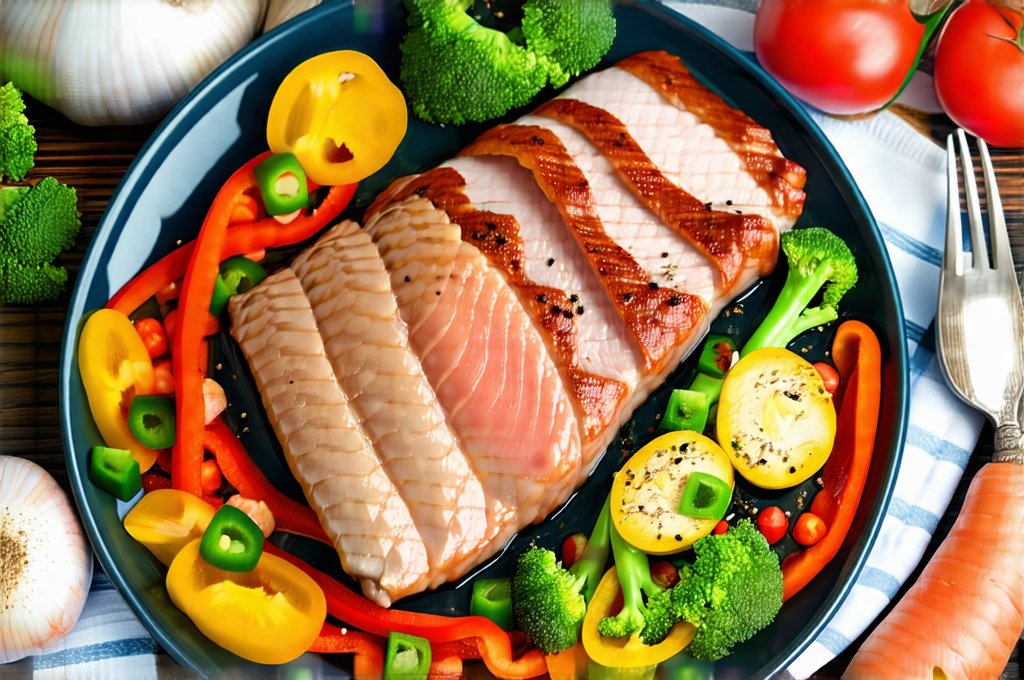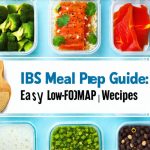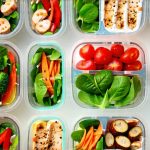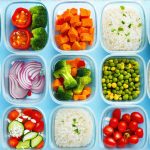Aging brings wonderful wisdom and experience, but it also often introduces changes in our bodies that require adjustments to maintain optimal health and well-being. For seniors, dietary needs can become more complex due to factors like decreased metabolism, reduced digestive function, medication side effects, and the prevalence of chronic conditions such as acid reflux or constipation. These challenges aren’t insurmountable; rather, they call for a proactive approach to nutrition that prioritizes gentle digestion, symptom management, and overall comfort. Understanding how to tailor meal planning to address these specific concerns is crucial for preserving quality of life and independence.
One powerful tool in managing dietary needs among seniors is meal preparation, often referred to as “meal prepping.” This isn’t about elaborate cooking or restrictive diets; it’s about intentionally planning and preparing meals in advance, ensuring that nutritious and easily digestible foods are readily available. For individuals experiencing reflux or constipation—conditions common in older adults—meal prep can be especially beneficial. It allows for greater control over ingredients, portion sizes, and cooking methods, minimizing triggers and promoting regularity. Moreover, it reduces the stress of daily meal decisions, freeing up energy and time for other activities. Considering meal organization techniques can further streamline this process.
Understanding Reflux & Constipation in Seniors
Reflux, or gastroesophageal reflux disease (GERD), occurs when stomach acid frequently flows back into the esophagus, causing heartburn and potentially damaging the esophageal lining. In seniors, weakened lower esophageal sphincter muscles and slower gastric emptying can contribute to this issue. Constipation, conversely, results from infrequent bowel movements or difficulty passing stools. Factors like reduced physical activity, decreased fluid intake, medication side effects, and changes in gut microbiome can all play a role. Both conditions can significantly impact a senior’s comfort and quality of life, leading to symptoms such as abdominal discomfort, bloating, nausea, and even pain. Recognizing the relationship between food choices and these conditions is the first step towards effective management through meal preparation. Understanding strategies for long-term meal planning can provide sustained benefit.
Meal prepping allows for customization based on individual sensitivities. For reflux sufferers, this means avoiding trigger foods like fried foods, citrus fruits, tomatoes, chocolate, caffeine, and alcohol. Smaller, more frequent meals are also generally better tolerated than large ones. In contrast, addressing constipation requires prioritizing fiber-rich foods such as whole grains, fruits, vegetables, and legumes, coupled with adequate hydration. Meal prepping can ensure these elements are consistently incorporated into the diet. It’s important to note that individual tolerances vary significantly; what triggers reflux or constipation for one person may not affect another. Therefore, careful observation of symptoms and adjusting meal plans accordingly is crucial. Focusing on best sources of dietary fiber will support digestive health.
Meal Prep Strategies for Seniors
Successful meal prep for seniors isn’t about perfectly portioned containers and Instagram-worthy meals—it’s about practicality and sustainability. Start small with just a few planned meals per week, gradually increasing as confidence grows. Focus on simple recipes that utilize readily available ingredients. Batch cooking is an excellent approach; prepare larger quantities of staple foods like cooked grains (brown rice, quinoa), roasted vegetables, or lean proteins (baked chicken, fish) to use in various combinations throughout the week. Consider using slow cookers or Instant Pots for effortless meal preparation. These appliances require minimal effort and are ideal for tenderizing meats and cooking nutrient-rich soups and stews.
When planning meals, prioritize foods that are easy to chew and digest. Soft-cooked vegetables, mashed potatoes, and ground meat are good options. Avoid overly processed foods, excessive sugar, and unhealthy fats. Hydration is paramount; include water-rich fruits and vegetables in meal plans and ensure access to fluids throughout the day. For seniors with reflux, portion control is key. Smaller portions reduce the risk of overfilling the stomach and triggering symptoms. Finally, labeling containers with dates and contents helps maintain organization and prevents food waste. Remember that involving a caregiver or family member can significantly ease the process and provide support.
Building Reflux-Friendly Meals
Reflux management through meal prep centers around identifying and eliminating trigger foods while focusing on gentle digestion. Lean proteins are generally well-tolerated, such as baked chicken breast without skin, fish (salmon, cod), or tofu. Pair these with easily digestible carbohydrates like oatmeal, sweet potato, or rice. Vegetables should be steamed, boiled, or roasted rather than fried. Avoid strong spices and acidic ingredients.
- Breakfast: Oatmeal with a small amount of banana and almond milk; scrambled eggs cooked without butter or oil.
- Lunch: Baked chicken salad sandwich on whole wheat bread (light mayonnaise); lentil soup with a side of steamed carrots.
- Dinner: Salmon baked with herbs, served with mashed sweet potatoes and green beans; turkey meatballs in tomato-free marinara sauce over quinoa.
Snacks should also be carefully chosen. Plain yogurt, applesauce, or a small handful of almonds can provide nourishment without triggering reflux. It’s essential to remember that every individual is different. Keeping a food diary to track symptoms and identify personal triggers is invaluable. For individuals with digestive concerns, nutrition support can be incredibly beneficial.
Incorporating Fiber for Constipation Relief
Constipation relief relies heavily on increasing fiber intake and ensuring adequate hydration. Meal prepping provides an excellent opportunity to consistently incorporate fiber-rich foods into the diet. Whole grains, such as brown rice, quinoa, or whole wheat bread, are excellent choices. Fruits like berries, apples (with skin), and pears provide both fiber and essential vitamins. Vegetables, particularly leafy greens, broccoli, and Brussels sprouts, are also valuable sources of fiber.
- Breakfast: High-fiber cereal with berries and almond milk; whole wheat toast with avocado.
- Lunch: Salad with mixed greens, chickpeas, and grilled chicken; vegetable soup with a side of whole grain bread.
- Dinner: Lentil stew with barley and carrots; baked sweet potato topped with black beans and salsa.
Hydration is equally crucial. Water helps soften stools and facilitates bowel movements. Encourage seniors to drink water throughout the day, even if they don’t feel thirsty. Adding fruits and vegetables with high water content (watermelon, cucumbers) can further contribute to hydration. It’s important to gradually increase fiber intake to avoid bloating or gas.
Staying Hydrated & Maintaining Consistency
Consistent hydration is often overlooked but plays a vital role in both reflux management and constipation relief. Aim for at least eight glasses of water per day, adjusting based on individual needs and activity levels. Herbal teas (ginger, chamomile) can also contribute to fluid intake and offer additional health benefits. Avoid sugary drinks and excessive caffeine, as these can exacerbate reflux symptoms or dehydrate the body.
Meal prepping isn’t a one-time event; it’s an ongoing process that requires consistency. Establish a routine for planning meals, grocery shopping, and preparing food. Don’t be afraid to experiment with different recipes and ingredients to find what works best. Remember that even small changes can make a significant difference in a senior’s comfort and well-being. And most importantly, prioritize enjoyment – mealtime should be a pleasant experience, not a source of stress or anxiety. Regularly reviewing the meal plan based on how it is working for the individual will ensure maximum benefit over time. It may also be helpful to consider microbiome-safe snack options between meals. For those with sedentary lifestyles, implementing anti-nausea eating habits can further improve comfort levels. Finally, proper planning can help navigate safe holiday eating tips.


















